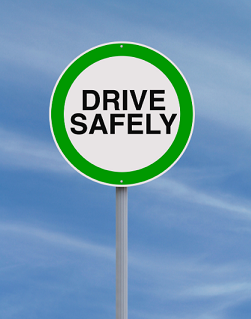
Contributing AuthorHealth and Safety , FeaturedNovember 30, 2020
Driving safely in the festive season is necessary. The festive season involves a lot of people travelling from one location to the other in order to celebrate the holidays with family and loved ones.
Unfortunately, this surge in road users almost always results in an increase in the occurrence of road accidents.
In this article, we outline helpful safety tips to ensure you drive safely in the festive season irrespective of the category of road users you belong to.

Motor vehicle crash injuries are a leading cause of death among children2, but you can make a difference by making sure kids are properly buckled on every ride. Driving safely in the festive season involves the ability to protect yourself and your children and keep the holiday season injury free.
Driving helps older adults stay mobile and independent. However, the risk of being injured or killed in a motor vehicle crash increases as people age. Thankfully, if you are an older adult driver, there are steps you can take driving safely in the festive season.
Telemedicine has become something super helpful in today’s busy world by enabling people to communicate with medical professionals from a distance. This creative opportunity improves the convenience and accessibility of medical services while ensuring you are driving safely in the festive season.
It is getting easier for you to select an alternative to traditional healthcare providers as online health care becomes more accessible. Less trouble over the holiday season is one of the benefits of telemedicine.
Driving safely in the festive season is a necessity, and you should also ensure you have access to the internet if you will be spending the holidays away from home. That way, you can have access to healthcare professionals in an emergency.
Telemedicine has made it easy that, when consulting with a doctor virtually, you can obtain prompt assistance for any medical issue you may be experiencing. You can still communicate with your doctor through phone, text, or video chat, even if you are in a far-off place.
You can access healthcare professionals through telemedicine platforms like Kompletecare from any location on the globe.
Nobody goes on a journey with the hope of experiencing unfortunate events on the road, but one can drive safely in the festive season to avoid any form of road accidents. In the event of seasonal diseases or accidents, you can get timely care with telemedicine, which uses internet services to address healthcare needs.
It is a fantastic idea to use internet medical resources. Through telemedicine, a doctor can deliver specialty treatment in your home, eliminating the need for you to physically visit the hospital. Even if you are not in the office, your doctor can still offer you guidance. You can stay at home and consult with qualified doctors over video or audio calls on KompleteCare.
There are better treatment outcomes for all parties involved, which result from the ability to communicate with clinicians and view photos of injuries, as the case may be in real-time through telemedicine.
1.Why does the public need to be more careful during festive season?
During the holidays, there is a sharp rise in traffic accidents, which result in hundreds of fatalities. to ensure you maintain driving safely in the festive season, make sure your car is in good condition by having it checked out before heading to your location in order to be safe. You should always use seat belts, as should your passengers.
2. Is it safe to drive during the holidays?
Driving safely in the festive is always the wise thing to do, but most people will wonder if it is really safe to drive during the holiday. It is shown that the dangers of reckless driving practices, such as speeding and hard braking, rise around the holidays. Festive seasons often have a higher number of automobile traffic fatalities than non-holiday seasons that is why adhering to the rules of road while you are driving safely in the festive season is necessary.
3. What is the difference between festive and festival?
Festive involves balloons, elegant attire, delicious meals, and other celebratory items and events. However, a festival is an occasion that is typically observed by a community and that revolves around a particular feature of that community’s religion or culture.
4. How can we reduce the number of road deaths that occur every festive season?
The number of death tolls on the road can be reduced by driving safely in the festive season.
You can apply some tips to make driving safely in the festive season a success. There are some tips:
5. What are some safety precautions that you can take while driving?
Driving safely in the festive season involves observing these safety guidelines:
6. What is the best slogan for road safety?
The road safety slogans while you are driving in the festive season are:
You are better late than never!
Put on your seat belt to prevent death!
Your final drive can be a quick one.
Your best instruments are traffic safety regulations.
Accidents do not just happen; they are caused.
Overspeeding is deadly.
Get wasted and lose it.
7. What four obligations do users of the road have?
To make our roads safer for everyone, it is the duty of every road user to abide by traffic safety regulations. Four obligations for road users are:
8. What is the 3 second rule used for driving?
The 3 second rule is that your car should arrive or stop at the same spot in three seconds or less. This indicates that there is enough room between your car and the one in front of you, and if the motorist in front of you uses their brakes unexpectedly, you should have enough time to slow down or halt.
9. What are some signs of an aggressive driver?
While you are driving safely in the festive season, look out for aggressive drivers with features such as:
11. What is aim high in steering?
One of the best tips for driving safely in the festive is to aim high in steering. When driving on the road, drivers should aim high, which means they should be gazing ahead 10 to 15 seconds. Basically, where is my car going to be in the next ten to fifteen seconds? Drivers will be able to recognize possible threats sooner and have more time to react appropriately.
12. How can you control your emotions when you drive?
Listed below are a couple pointers that can help you remain safe and prevent emotional driving whenever circumstances do not go well for you.
13. Who is responsible for safe vehicles?
Although governments, automakers, auto insurance companies, and other stakeholders share responsibility for road safety, there are numerous things drivers may do to make the road safer while driving safely in the festive season.
References
National Highway Traffic Safety Administration (NHTSA), National Center for Statistics and Analysis (NCSA). Traffic Safety Facts 2017: A Compilation of Motor Vehicle Crash Data. [cited 2019 November 13]. Available from URL: https://crashstats.nhtsa.dot.gov/Api/Public/ViewPublication/812806external icon.
Centers for Disease Control and Prevention (CDC), National Center for Injury Prevention and Control (NCIPC). Web-based Injury Statistics Query and Reporting System (WISQARS). [cited 2019 November 13]. Available from URL: http://www.cdc.gov/injury/wisqars.
Kahane CJ. National Highway Traffic Safety Administration (NHTSA). Lives saved by vehicle safety technologies and associated Federal Motor Vehicle Safety Standards, 1960 to 2012–Passenger cars and LTVs–With reviews of 26 FMVSS and the effectiveness of their associated safety technologies in reducing fatalities, injuries, and crashes (Report No. DOT HS 812 069). Released January 2015. Available from URL: https://crashstats.nhtsa.dot.gov/Api/Public/ViewPublication/812069external icon.
His. (2024). 15 rules for defensive driving.
News in Health. (2020). Safe driving: Protecting yourself behind.
Secure medical. (2021). How online health care is the best option for you during the holidays.
Southeastern Driver Training Centre. (n.d). A break down of Smith system.
Texas Department of Transportation. (2024). Be safe. Drive smart.
Vuk’uzenzele. (2018). Tips to keep you safe this festive season.
Health and Safety November 30, 2020
Healthy livingNovember 30, 2020
healthcareNovember 7, 2024
MedicationNovember 25, 2024
NutritionFebruary 5, 2025
MedicationFebruary 5, 2025








